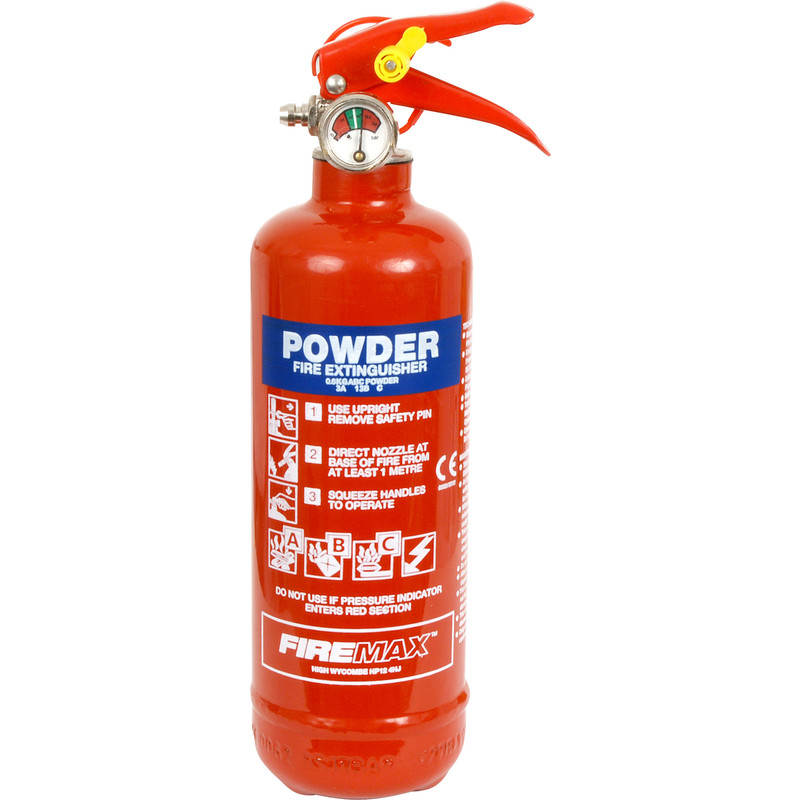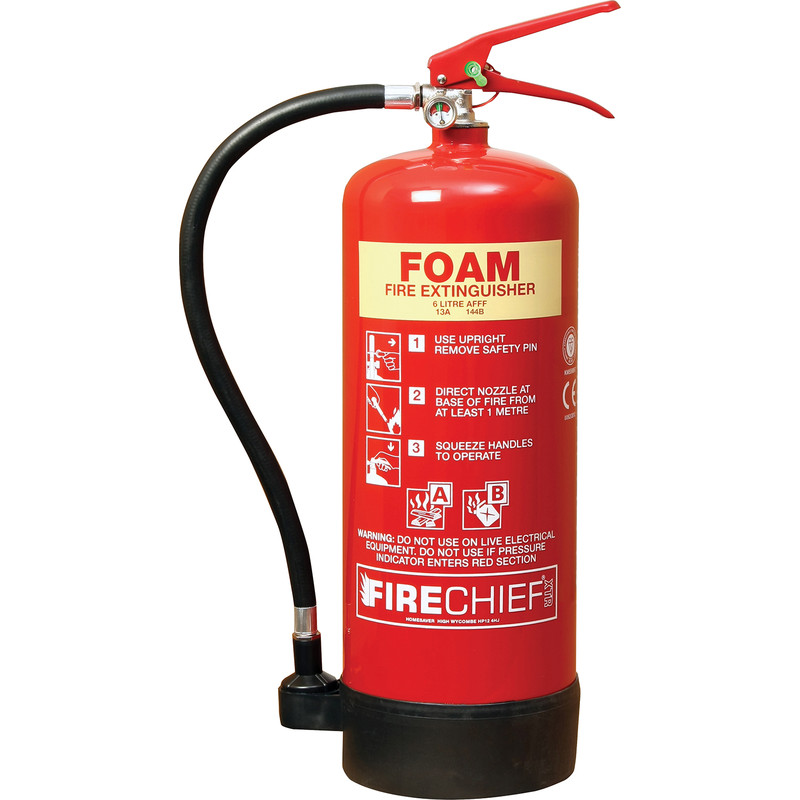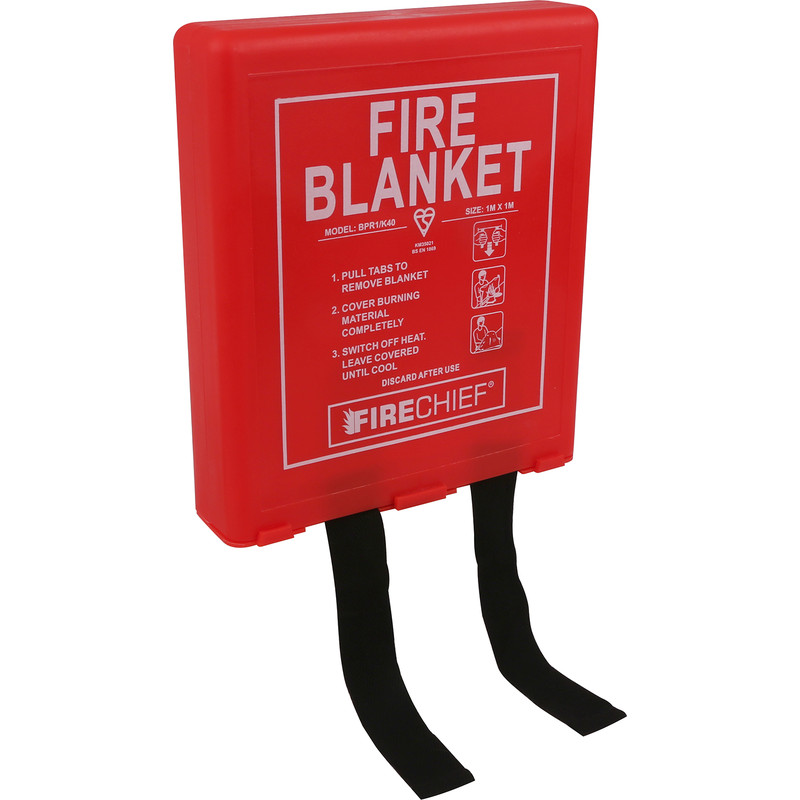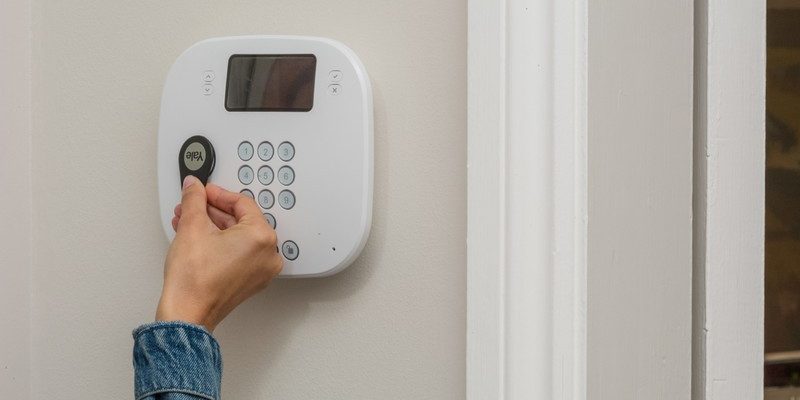With several fire extinguisher types to choose from, it’s vitally important to understand the differences between them, not least because of regulations surrounding their use within commercial settings, but also that the right type of fire extinguisher will quickly snuff out small, self-contained fires.
No matter what type of fire extinguisher you need, and whether it’s for residential or business use, they act as a first line of defence which may help prevent a blaze from getting out of control and putting lives at risk.
In this guide we’ll be covering the different types of fire extinguishers and how they can be identified along with their intended use, so you can be confident of making the right choice, for the right premises.
Fire Extinguisher Types & Their Uses
There are five main types of fire extinguishers; water, dry powder, foam, carbon dioxide, and lith-ex and their differences lie in what type of fire they can be used on. This is important to remember as using the wrong type of extinguisher on a fire, for example water on a fuel fire, can actually make it much worse.
You can identify fire extinguishers by the different safety signs which inform you of the contents and the types of fire they're suitable for.

CO2 Fire Extinguishers
CO2 fire extinguishers have a black label and are used for flammable liquid and electrical fires (Class C and E). They displace oxygen in the air to suffocate the fire and stop it spreading.
CO2 extinguishers leave no residue and won’t damage electricals – meaning they’re ideal for offices, shops, schools and hospitals. They can also be useful at petrol stations, because they can put out petrol fires quickly.
These extinguishers do not cool down the object that was on fire, and there is a risk of it re-igniting afterwards as a result. You should also make sure to look for an insulated horn to reduce the risk of frost burn when using CO2 extinguishers
Suitable For
-
Flammable liquid fires (Class B)
-
Electrical fires (Class E)
Not Suitable For
-
Flammable solid, gas and metal fires (Class A, C and D)
-
Lithium battery fires
-
Fat and oil fires (Class F)

Dry Powder Fire Extinguishers
Looking for a versatile extinguisher for basic fires? Dry Powder fire extinguishers, identified with their blue label, can be used for solid, liquid and gas fires. They’re also a good fire extinguisher for electrical fires up to 1000 volts. They quickly smother fires by forming a barrier between the fuel and the oxygen source.
They’re ideal for fires that can occur in outdoor environments such as garages, outdoor workshops and fuel tankers. If you’re looking for a home fire extinguisher, dry powder models can tackle a range of common domestic fires.
There is a slight danger of re-ignition after the powder has smothered the fire, and there is a lot of residue left over a large area. This residue can obscure vision and be inhaled – meaning they shouldn’t be used inside if possible
Suitable For
-
Flammable solid, liquid and gas fires (Class A, B and C)
-
Electrical fires up to 1000 volts (Class E)
-
Some are suitable for flammable metals (Class D)
Not Suitable For
-
Lithium battery fires
-
Fat and oil fires (Class F)
-
Electrical fires over 1000 volts (Class E)

Water Fire Extinguishers
Water fire extinguishers have a red label and shoot a jet of water at flammable solids (Class A fires) to cool them down and prevent reignition.
They’re an inexpensive option in places where taps aren’t readily available – such as outside on campsites – allowing you to quickly suppress simple fires.
Water fire extinguishers, while ideal for flammable solids, can cause more danger if used on electrical fires because they could cause electrocution, or oil fires because the hot oil could spray and injure someone.
Suitable For
-
Flammable solids like wood or paper (Class A)
Not Suitable For
-
Flammable liquid, gas or metal fires (Class B, C and D)
-
Electrical equipment (Class E)
-
Fat and oil fires (Class F)

Foam Fire Extinguishers
Foam fire extinguishers, which can be identified by their cream label, are an ideal choice for extinguishing Class A and B fires (solid and liquid). They seal the surface of the liquid or solid, preventing vapour from reaching the air and starving the fire of fuel.
They’re a more versatile option than water extinguishers – suited to simple wood and paper fires as well as petrol or diesel fires. This makes them a good option for petrol stations, where there are risks from flammable liquids.
Foam fire extinguishers can make flammable gas or oil fires worse and more dangerous. They can also cause damage to electrical appliances, but many of these extinguishers can still be used for electric fires if you accept that you won’t get the electrics back.
Suitable For
-
Flammable solid fires (Class A)
-
Flammable liquid fires (Class B)
Not Suitable For
-
Free-flowing liquid fires
-
Gas, metal and electrical fires (Class C, D and F)
-
Fat and oil fires

Lith-Ex Fire Extinguishers
Lith-Ex Fire Extinguishers are used for fighting lithium battery fires, and have a green label. They work by spraying a non-toxic mist called Aqueous Vermiculite Dispersion (AVD) – creating an oxygen barrier to starve the fire, cool the battery, and prevent reignition.
These batteries are used in phones, laptops, toys, tools, mobility scooters, drones, vehicles and more. These fires can’t be put out with any other extinguisher, making Lith-Ex types more versatile than you may think – they’re essential for warehouses where lithium batteries are present, and may even be helpful in the home.
Lith-Ex extinguishers come with a higher price-tag than most other extinguishers because they’re specially designed for fires that are difficult to combat.
Suitable For
-
Lithium battery fires
Not Suitable For
-
Flammable solid, liquid, gas or metal fires (Class A, B, C and D)
-
Electrical fires (Class E)
-
Fat or oil fires (Class F)

Fire Blankets
Fire blankets are different to other types of extinguishers – as they’re easier to use and made of a fire-retardant woven fabric to put out small fires. They can smother hot oil in frying pans or smaller deep fat fryers, and be used on someone whose clothing has caught fire.
They’re particularly useful in places where there is a higher risk of fire, such as kitchens – both industrial and domestic. Fire blankets make quick work of fighting small fires and can prevent expensive damage to equipment. They can also be used as protection if you need to escape a room on fire.
Because they can only be used on small fires, their use is limited. When using a fire blanket you should be quick to smother the fire before it becomes too big for a blanket to combat.
Suitable For
-
Small solid (including clothing), liquid and metal fires (Class A, B and D)
-
Small electrical and fat fires (Class E and F)
-
Protection during escape
Not Suitable For
-
Rarely for Lithium battery fires
-
Gas fires (Class C)
-
Large fires
Fire Extinguisher Features and Accessories
Extinguisher Size
Not sure what size extinguisher you need? It’s not just the size of the room you need to consider, but also the people who may be using it.
For the home, a 2kg (2 litre) extinguisher will be enough to fight fires in the kitchen, but in large warehouses you should consider multiple, larger canisters of 6kg or more. Some models, like Lith-Ex extinguishers, come as smaller types – 500ml should be enough for a garage with power tools, whereas warehouses should consider 6 litre models.
Also remember that, especially in panicked situations, more extinguishers that are lighter is better than a single heavy one – they’re of no use if the user can’t lift them!
Stored Pressure vs Cartridge Operated
Stored Pressure extinguishers are the most common type, where the propellant comes from the same chamber as the firefighting agent itself. In dry powder extinguishers, for example, this is often nitrogen – when triggered, the nitrogen automatically forces the dry powder out.
Cartridge Operated extinguishers are less common – mainly used in industrial facilities with higher-than-average use – and contain the propellant gas separately. This gas is punctured before discharging the extinguisher to allow the firefighting agent to spray out.
Cartridge Operated types can be simply and quickly recharged in the event of an emergency.
Fire Extinguisher Signs
Fire extinguisher signs are placed next to the extinguisher to tell you how to use it and which sort of fire it’s suitable for, making them crucial in an emergency.
They’re almost always photoluminescent so they can be seen when it’s dark, so you can be alerted to the location of the extinguisher.
Hot Work Kits
Hot work kits are used by contractors carrying out on-site work which may come with fire risks – such as welding.
They generally contain a small extinguisher and a fire blanket, and come in a handy carry case so they can be transported easily from job-to-job, knowing you have the essentials if a fire breaks out.



